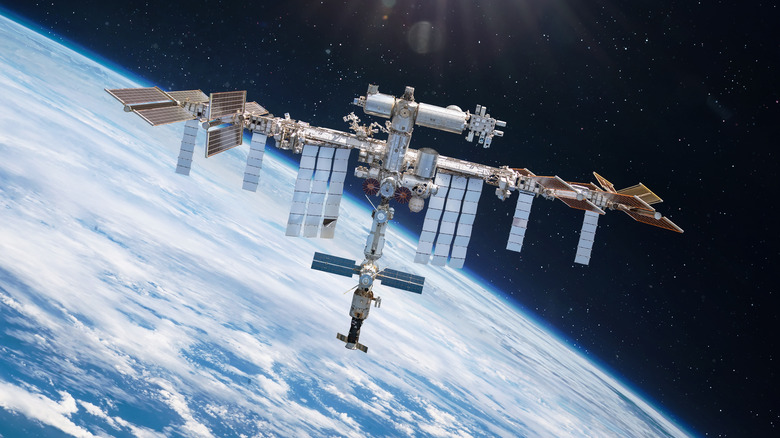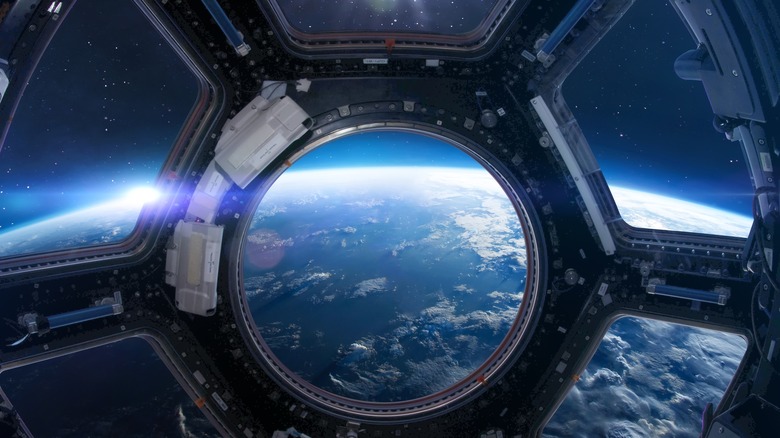Why This 2031 Deadline Has NASA Doubling Down On Commercial Space Travel
NASA began putting the International Space Station (ISS) into orbit all the way back in 1998, where it's been floating ever since. Over the past two (going on three) decades it's been home to representatives from numerous space agencies from around the world, both in the name of scientific progress and to foster camaraderie between various nations.
That all changes in 2031, when NASA plans to retire the ISS with a combination of natural orbital decay and controlled reentry. In other words, the ISS is going to be allowed to crash in a calculated area so that it can be recovered, then properly disassembled and decommissioned at ground level. A lot of thought and preparation is going into the de-orbiting in an attempt to prevent any danger to people, so assuming all goes according to plan, the station and various bits of debris should land somewhere in the ocean, far away from any populated areas.
The planet won't be without a space station, though, as NASA has been working with a few commercial enterprises to hash out designs for new orbiting structures. Serving a dual purpose by catering to both the scientific and potentially commercial aspects of space travel. Or rather, being in low-Earth orbit.
Why the big commercial push?
The short explanation for NASA's drive to help get commercially-backed space stations into orbit is two big "-ics": Optics and economics. With the ISS destined to re-enter Earth's atmosphere the quick and fire-y way in 2031 (originally planned for 2024 but it was given an extension) due to a combination of wearing down from age and newer more effective equipment becoming available in the decades since its initial launch, the agency wants to make sure the U.S. can maintain a presence in space.
Beyond wanting to keep that previously established foothold, it also wants to help establish "a thriving space economy" – and farming out funds to promising commercial companies like Blue Origin and Starlab is how it plans to get the job done. These commercial space stations would then, in theory, act as their own surrogate versions of the ISS (with updated technologies) and offer services to both governments and private sectors for continued scientific tests in microgravity, as well as what could best be described as space tourism.
However, some of these commercial entities have begun to back out of the project for various reasons, meaning NASA has to start from square one in at least a couple of different projects with less time to finalize everything before that 2031 cutoff — and 2031 isn't very far off in terms of developing and implementing a working orbital space station.

